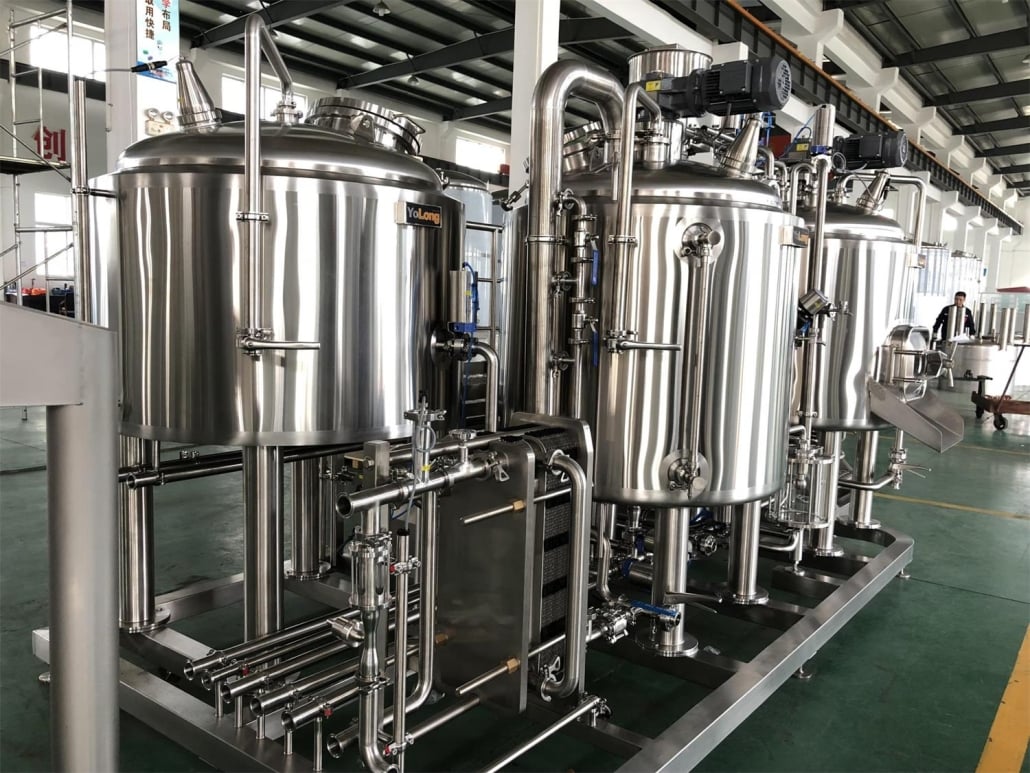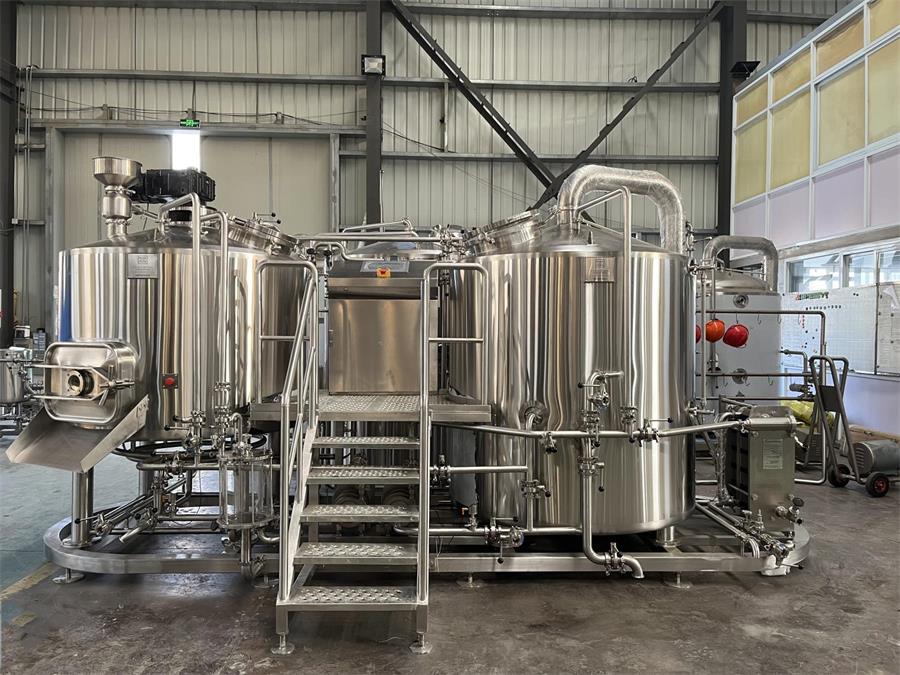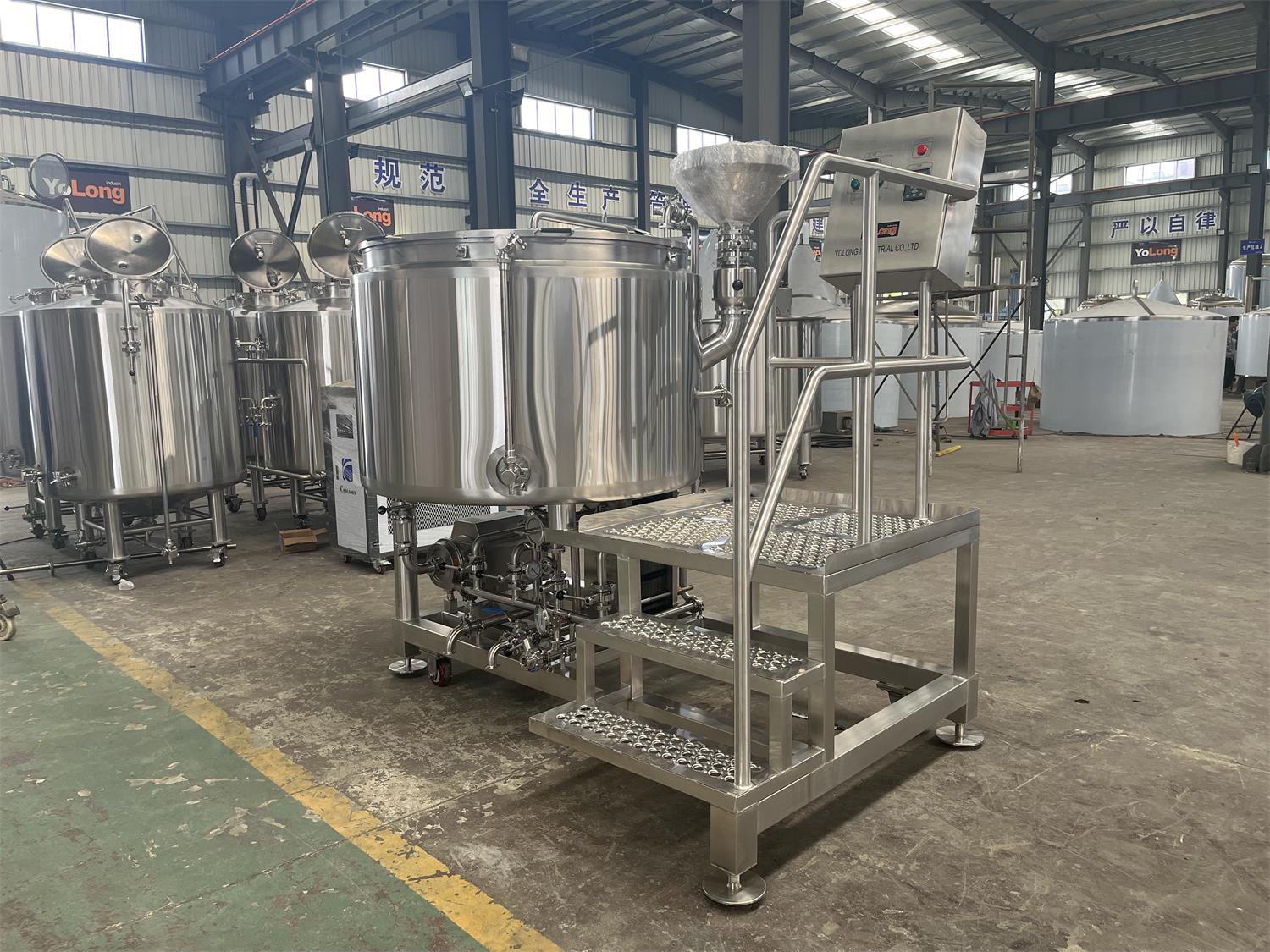The Ultimate Guide to Commercial Microbrewery Equipment
Commercial microbrewing has become a booming industry, driven by the passion for unique, craft beers and the entrepreneurial spirit of beer enthusiasts. This guide delves into the essential equipment required for setting up a commercial microbrewery, the brewing process, and everything in between. Let’s explore the journey of transforming hops and barley into that perfect pint.
Overview
Setting up a commercial microbrewery involves more than just a love for beer. It requires a comprehensive understanding of the equipment, space, design, and the brewing process. Here, we’ll provide an in-depth look at each aspect to ensure you’re well-prepared to embark on this flavorful adventure.
Equipment Guide for Commercial Microbreweries
When starting a commercial microbrewery, understanding the equipment is crucial. This section will cover the essential tools and machinery required, their functions, and how they fit into the brewing process.
Brewing Process: From Grain to Glass
The brewing process is a meticulous journey. Here’s a step-by-step guide:
- Milling: The grains are crushed to expose the starchy endosperm, necessary for mashing.
- Mashing: Crushed grains are mixed with hot water to convert starches into fermentable sugars.
- Lautering: The mash is separated into clear liquid wort and residual grain husks.
- Boiling: The wort is boiled and hops are added for bitterness and aroma.
- Fermentation: Yeast is added to the cooled wort to begin the fermentation process.
- Conditioning: The beer matures and develops its flavors.
- Packaging: The finished beer is bottled, canned, or kegged.

Types of Commercial Microbrewery Equipment
Understanding the types and functions of each piece of equipment is essential. Here’s a breakdown:
| Equipment Type | Description |
|---|---|
| Malt Mill | Crushes the malt to prepare it for mashing. |
| Mash Tun | Vessel where mashing occurs, converting starches to sugars. |
| Lauter Tun | Separates wort from grain husks. |
| Brew Kettle | Where the wort is boiled and hops are added. |
| Whirlpool Tank | Separates hop particles and trub from the wort. |
| Fermenter | Tank where wort ferments into beer. |
| Bright Beer Tank | Vessel for beer conditioning. |
| Heat Exchanger | Cools the wort before fermentation. |
| CIP System | Cleaning-in-place system for sanitizing tanks and pipes. |
| Packaging Machine | Equipment for bottling, canning, or kegging the finished beer. |
Detailed Equipment Guide
Each piece of equipment plays a pivotal role in brewing:
Malt Mill: The malt mill crushes the grains, allowing for better extraction of fermentable sugars. The fineness of the crush affects the efficiency and flavor profile of the beer.
Mash Tun: This vessel mixes the crushed grains with hot water, converting the starches into fermentable sugars through enzymatic activity.
Lauter Tun: After mashing, the lauter tun separates the liquid wort from the grain husks, ensuring a clear wort for boiling.
Brew Kettle: In the brew kettle, the wort is boiled, and hops are added. The boiling process sterilizes the wort and extracts flavors from the hops.
Whirlpool Tank: Post-boiling, the wort is transferred to the whirlpool tank, where it is spun to separate the trub (hop particles and proteins) from the liquid.
Fermenter: The cooled wort is transferred to the fermenter, where yeast is added. The fermentation process converts sugars into alcohol and carbon dioxide, creating beer.
Bright Beer Tank: After fermentation, the beer is conditioned in the bright beer tank, where it matures and clarifies.
Heat Exchanger: This equipment cools the hot wort to a temperature suitable for yeast addition, ensuring a healthy fermentation.
CIP System: Keeping the brewing system clean is essential. The CIP system allows for effective cleaning and sanitization of tanks and pipes without disassembly.
Packaging Machine: The final product needs to be packaged for distribution. The packaging machine handles bottling, canning, or kegging the beer, maintaining its quality and freshness.
Brewing Process Explained
The brewing process is a beautiful blend of art and science. Each step, from milling to packaging, plays a crucial role in the final product. The quality of each stage affects the taste, aroma, and overall experience of the beer.
Capacity, Space, Design, and Customization
When planning your microbrewery, consider the following aspects:
| Aspect | Details |
|---|---|
| Capacity | Determine the production volume based on market demand and growth projections. |
| Space | Ensure sufficient space for equipment, storage, and workflow. |
| Design | Plan an efficient layout to optimize the brewing process, including placement of tanks, piping, and utilities. |
| Customization | Tailor equipment and layout to suit specific brewing styles, recipes, and operational preferences. |
Capacity and Space Planning
Capacity: Assessing the capacity involves estimating the volume of beer you plan to produce. This depends on market demand, distribution plans, and future growth. Microbreweries typically start with a smaller capacity, around 3 to 10 barrels per batch, and can expand as needed.
Space: Adequate space is vital for a smooth operation. Consider not only the footprint of the equipment but also the workflow and storage requirements. Allow for easy movement, maintenance access, and future expansion.
Design and Layout
Design: An efficient layout enhances productivity and safety. Place equipment in a logical sequence to streamline the brewing process. For instance, position the mill near the mash tun and the fermenters close to the brew kettle. Ensure easy access to utilities like water, electricity, and drainage.
Customization: Customizing your setup can lead to a more efficient and unique brewing process. Adjustments might include specialized tanks, unique piping configurations, or advanced automation systems. Tailor your setup to match your brewing style and operational needs.
Suppliers and Price Range
Choosing the right supplier is critical. Here’s a look at some reputable suppliers and the typical price range for commercial microbrewery equipment.
| Supplier | Price Range | Key Features |
|---|---|---|
| Ss Brewtech | $50,000 – $500,000 | Innovative designs, high-quality materials, scalable solutions |
| Blichmann | $60,000 – $400,000 | User-friendly, efficient designs, customizable setups |
| PsychoBrew | $40,000 – $350,000 | Compact systems, ideal for small to medium breweries |
| Brewmation | $70,000 – $600,000 | Automated systems, advanced technology, robust builds |
| ProBrew | $80,000 – $700,000 | High-capacity systems, integrated solutions, premium quality |
Evaluating Suppliers
When choosing a supplier, consider the following:
- Reputation: Look for established suppliers with positive reviews and a solid track record.
- Support: Ensure the supplier offers good customer support, including installation, training, and maintenance services.
- Customization: Check if the supplier can customize equipment to suit your specific needs.
- Warranty: A good warranty can save costs on repairs and replacements in the long run.
Installation, Operation, and Maintenance
Proper installation, operation, and maintenance are vital for the smooth functioning of your microbrewery.
| Phase | Details |
|---|---|
| Installation | Professional installation ensures equipment is set up correctly, avoiding future operational issues. |
| Operation | Training staff on equipment use and safety protocols is essential for efficient and safe operations. |
| Maintenance | Regular maintenance extends the lifespan of equipment and ensures consistent beer quality. |
Installation Tips
- Hire Experts: Engage professional installers familiar with brewery setups.
- Inspect Thoroughly: Check all equipment for defects before installation.
- Follow Guidelines: Adhere to manufacturer instructions and local regulations.
Operational Best Practices
- Train Staff: Comprehensive training ensures staff know how to operate equipment safely and efficiently.
- Monitor Processes: Regularly check brewing processes to maintain quality and efficiency.
- Record Keeping: Maintain logs of brewing cycles, maintenance activities, and any issues encountered.
Maintenance Essentials
- Routine Checks: Perform daily, weekly, and monthly checks on all equipment.
- Scheduled Servicing: Follow a strict servicing schedule as recommended by the manufacturer.
- Keep Spare Parts: Stock essential spare parts to minimize downtime during repairs.
Choosing the Right Supplier
Selecting the right supplier involves careful consideration of various factors. Here’s a detailed look:
| Consideration | Details |
|---|---|
| Quality | Ensure the equipment is made of durable, food-grade materials. |
| Customization | Check if the supplier offers customization to meet specific brewing needs. |
| Support | Good customer support for installation, training, and maintenance is crucial. |
| Warranty | A strong warranty protects against potential equipment failures. |
| Price | Compare prices to ensure you’re getting good value without compromising on quality. |
Comparing Pros and Cons
When evaluating suppliers, weigh the pros and cons to make an informed decision.
| Supplier | Pros | Cons |
|---|---|---|
| Ss Brewtech | Innovative designs, scalable, high-quality materials | Higher initial cost compared to some competitors |
| Blichmann | User-friendly, customizable, efficient designs | May lack some advanced features found in more expensive systems |
| PsychoBrew | Compact systems, ideal for smaller spaces, affordable | Limited scalability for larger production volumes |
| Brewmation | Automated systems, advanced technology, robust builds | Higher complexity might require more intensive training for staff |
| ProBrew | High-capacity, integrated solutions, premium quality | Premium quality comes with a premium price, might not be suitable for startups with limited budget |

FAQ
Here’s a comprehensive FAQ section addressing common questions about commercial microbrewery equipment:
| Question | Answer |
|---|---|
| What is the cost of setting up a commercial microbrewery? | The cost can range from $100,000 to over $1 million, depending on the scale and customization. |
| What size microbrewery should I start with? | Start with a size that matches your production goals, typically 3-10 barrels per batch for beginners. |
| How do I choose the right equipment supplier? | Consider factors like reputation, support, customization options, and price. |
| What maintenance is required for brewery equipment? | Regular checks, scheduled servicing, and keeping spare parts are essential for maintenance. |
| Can I customize my microbrewery equipment? | Yes, many suppliers offer customization to meet specific brewing needs. |
| What training is needed for operating brewery equipment? | Comprehensive training on equipment use, safety protocols, and brewing processes is crucial. |
| How long does it take to set up a microbrewery? | Setup time can vary but typically ranges from several months to a year, including planning and installation. |
| What are the key factors in designing a microbrewery layout? | Efficiency, workflow optimization, space utilization, and access to utilities are key factors. |
| How important is the quality of ingredients in brewing? | Extremely important. High-quality ingredients directly affect the flavor and quality of the beer. |
| What are the common challenges in microbrewery operations? | Common challenges include maintaining consistency, equipment malfunctions, and regulatory compliance. |
Conclusion
Setting up a commercial microbrewery is an exciting venture that combines passion, science, and creativity. By understanding the essential equipment, brewing process, and critical planning aspects like capacity, space, design, and supplier selection, you’re well on your way to crafting exceptional brews. Remember, the heart of a successful microbrewery lies in the quality of its products and the efficiency of its operations.
Share this entry
Interested in learning more about Brewing Systems including additional details and pricing information? Please use the form below to contact us!
YOLONG BREWERY EQUIPMENT FAQS
- Commercial Brewery / Craft Brewery / Microbrewery / Nanobrewery
- What is The Difference Between Craft Beer and Industrial Beer?
- The Bespoke Differences In Custom Brewing Systems
- Everything You Need to Know About Kettle Souring
- How to Choose Brewing Equipment for Your business?
- How To Choose The-Best Partner To Build Your Commercial Microbrewing System?
- Two Detection Sensors That You Need To Use In Your Brewhouse System
- Remote Control Applications in Brewing Equipment/How does it work?
- How To Clean Your Brand New Brewery Tanks?

